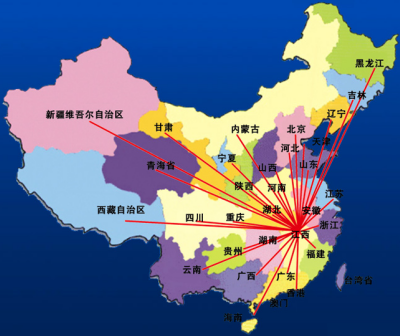Compared with semi-dwarf rice which is widely grown at present, super rice has higher plant type, thicker rice stalks, larger panicles, increased storage capacity, rich nutrients in the body, and a significant increase in rice yield per unit area. However, changes in the plant structure and nutrient composition have also induced changes in the population of rice field pests and diseases. For example, stem borer, rice planthopper, sheath blight, and rice smut have a large number of serious damages, especially rice smut disease. From the past, the secondary diseases on rice have risen as the main diseases, and rice blast has been seriously endangered in some areas. The use of conventional chemical control methods not only has high drug costs, pollutes the environment and rice, but also cannot effectively control pests and diseases, and has a serious impact on the production and promotion of super rice. We conducted new pesticide control for super rice pests and diseases in 2001-2005. Technical research has formed a set of new pharmaceutical technologies that can effectively prevent and treat major pests in super rice. The technology has achieved about 80% control of disease, and the pest control effect is over 90%. The operating procedures and key contents of the technology are described below, for the majority of agricultural technicians and farmers' friends to plant super rice reference. 1. The technical regulations for the prevention and control of major pests in super rice are as follows: 1. Before seed soaking, seed soaking shall be carried out with 2.5 percent Shiloh suspension seed coating agent 3-4 ml seed dressing or 0.2% strong chlorohydrin aqueous solution soaking seed seeding. Prevention of species transmission diseases. 2. When the field is planted or transplanted for 5-7 days (for survival of seedlings), 38% of the seedlings are thrown in the topdressing fertilizer in the topdressing field and the net weight is 40g or 50% of the fermented seedlings are transferred into the transplanted field per acre. In milliliters of rice field, weed control. 3. Super rice is sprayed once per acre in the last stage of the tillering stage with 15 ml of 5% Ruijin special suspending agent, 30% Ai Miao EC 15 ml, diluted with water, sprayed with 30 kilograms of liquid to control aphid and sheath blight, leaf plague Wait. 4. Apply 30% Ai Miao EC 20ml per acre at the end of the booting stage (3-5 days before the break) and dilute 1500-3000 times to the water, and apply 30-60 kg each time. Rice smut, sheath blight, rice blast. When 30% Aiyou EC is used, it can be mixed with 5% Ruijinte Suspending Agent or Acetomethoxate and other pests to treat aphids and rice leaffolders. In the case of a large amount of rice planthoppers, the last application of the pesticide can be mixed with 3 grams of 25% Aktai water dispersible granules per acre. 5. In other periods, depending on the occurrence of pests, it is determined whether additional pesticides should be applied. Farmers' friends can also follow the flow chart of the prevention and control of new rice pests during the growing season. Second, the key technology 1, grasp the application of appropriate drug administration. The trials showed that the main pesticides for super rice pest control application period is: the end of tillering, 3-5 days before the break, the earliest peak period of three periods, especially to prevent the occurrence of rice smut, must be in this 3 The pesticides were applied at the same time in each period; in other periods, it was determined whether or not pesticides were applied once in the field. Super rice field pests were applied 3-4 times. 2. Select new pesticide varieties that are broad-spectrum, high-efficiency, long-acting, and small-residue. Through our field drug screening test in recent years, the new pesticides that are suitable for the prevention and treatment of super rice pests and diseases are: 130% Aimiao EC. It is mainly used to control fungal diseases such as rice smut, sheath blight, rice blast, etc. At the same time, it can effectively promote rice growth and development. 225% Good Lick. It is used to control fungal diseases such as rice smut, sheath blight, and rice blast. 35% fipronil. For the control of aphids, rice planthoppers, rice leaf roller and other rice pests. 425% Aktai. Used to control rice planthoppers. 3, pay attention to the method of application and application of the selection of appliances. When multiple pests in the field occur at the same time, two new pesticides and one common pesticide can be mixed and sprayed. When only one kind of pest occurred, only one kind of new pesticide was applied. The best application of pesticides is the use of ultra-low-capacity or mist sprayer. (Liu Jianping Zhang Songbai)
We have been producing Biological Products for about 50 years. Tetanus Antitoxin is the main product of our biological products, and its market share in China is over 70%, more over, it's been exported to over 20 countries. It won the title of Provincial Excellent New Products in 1998, the New Products Gold Prize by the Southeast Asia Chamber of Commerce in 2001, and the Excellent New Products Gold Cup by the Seventh Asean Congress of Traditional Chinese Medicine in 2003.


Biological Products For Human,Biological Products,Medical Biological Products,Biological Products Antisera
Jiangxi Institute of Biological Products Inc. , http://www.jxinstitute.com